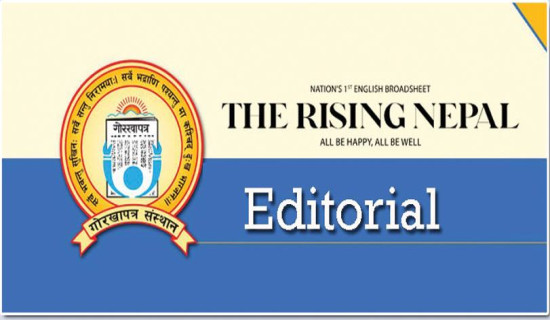- Friday, 28 November 2025
Contain Digital Abuse
With a massive proliferation of Information and Communication Technologies (ICTs), the use of digital spaces has increased manifold. Such spaces have turned out to be both a boon and a bane for people, disproportionately affecting girls and women. Highlighting this, the United Nations has begun celebrating this year’s 16-day activism against gender-based violence as a fight against growing, horrific digital crimes that are perpetrated against this vulnerable lot.
Girls and women have long been easy targets of violence. And more importantly, the nature of such violence is turning out to be more complex and challenging. Today, digital crimes in various manifestations are causing trauma and lifetime scarring to the victims. Those crimes include deep-fakes, doxing, cyberbullying, hacking, and impersonation, among others. Referred to as digital violence, this phenomenon results in physical, psychological, economic, social and other kinds of harm inflicted through the digital medium.
According to reports, about 16 -58 per cent of girls and women, from around the globe, have faced technology-induced digital violence in some form or the other. Such cases are common in both developed as well as underdeveloped countries. Studies have also shown that women politicians, human rights advocates and journalists go through a greater level of digital abuse.
In Nepal’s context, the number of digital crimes in general seems to have been increasing significantly every year. So is the case with rising digital violence against girls and women. Social media sites have been especially misused to spread hate comments on female public figures and in digital stalking. Speaking of the country’s existing situation in regard to digital space, the digital literacy stands at 31 per cent. Along with that, weak civic education, inadequate institutional capacity of public institutions and obsolete laws on cybercrimes are prime challenges at present. The majority of people are unaware of the risks digital spaces pose, especially for girls and women. A lack of awareness about digital safety has victimised more individuals.
Another point worth mentioning is the concern of social prestige linked with the reporting of digital violence. Even today, the majority of households prevent victims from opening up, encouraging perpetrators to do as they wish. Likewise, agencies like Nepal Police Cyber Bureau appear to be ineffective owing to inadequate financial resources and sophisticated technologies. Also, authorities have time and again faced criticism for a lack of cooperation and not taking matters seriously. This in itself highlights the type of mindset the society has. This mentality is really in dire need of change.
Besides, legal provisions like the Electronic Transaction Act, 2068, do not incorporate provisions related to cybercrimes. Strengthening cybercrime laws is fundamental to ensuring justice and significantly reducing the number of perpetrators in society. But in the centre of all this, remain narrow, patriarchal thoughts that have to be erased from the roots to end all kinds of violence against girls and women.
Digital violence is an inhibitor of every progress and development we have ever achieved and what we wish to attain in the coming days. It shrinks human development and prevents girls and women from participating in public life more openly. Moreover, it is an antithesis of human rights. Hence, concerted efforts on the part of state and non-state actors are imperative to contain digital violence and create a safe and secure digital space for every member of our society.














